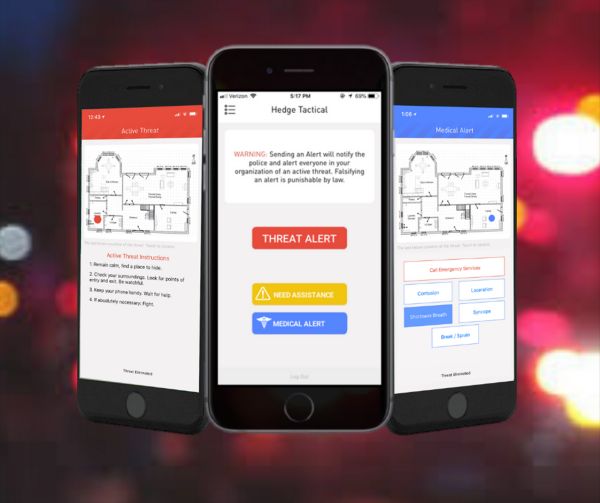In the first 21 weeks of 2018, there were 23 school shootings where someone was hurt or killed. That averages out to more than one shooting a week.
If you have a social media account, follow the latest news, or have been personally impacted by this pressing issue at the forefront of our nation’s attention, then you are aware of the shocking violence occurring in schools, businesses, and places of worship across our country.
It seems as though one news headline after the other hits the press, innocent lives are taken, and communities are left forever impacted. School officials across the nation have quickly realized the reality they face this back-to-school season. These headlines aren’t a matter of IF anymore, but rather WHEN.
That stark reality has undoubtedly sparked a renewed focus on being able to answer this question confidently, “How will my school respond to such an emergency?”
This article aims to provide the insight needed to understand the components for a robust emergency response plan and guide your search for tactical response tools/training for your school to form a renewed sense of proactive safety this school year.
What Does It Mean to Respond to an Emergency?
Common examples observed in schools include unwarranted guests at the front entrance, a student with a medical condition losing consciousness, or an individual with a firearm entering the building to cause harm.
First, it’s necessary to recognize that emergencies arise in many forms and require uniquely different responses. Infinite situational variables can quickly make the task of crafting emergency response plans a bit overwhelming.
It’s helpful to begin by assigning these many emergency scenarios into the most commonly observed broad categories, which include regular staff needs assistance incidents, medical emergencies, and active threat situations.
Any one of these emergency scenarios requires a unique rapid response among school staff and often emergency responders, but the common theme among them all is that seconds matter.
Emergency response preparation is an essential component in your school’s ability to save lives when seconds matter. The multitude of possible scenarios that may arise throughout a school day is ever increasing, especially regarding active threat situations.
Each attack is different, every person behind them is distinctly complex, using guns and weapons are becoming more prevalent, and resources to plan such horrendous acts are ever evolving and more available on the Internet than ever before. The reality is that no one can truly predict what might happen.
For this reason, Dave Kisch, a retired police/school resource officer, says, “Proactively taking time, and spending money acting to ensure your schools emergency response plans are regularly practiced and improved is the best option in today’s environment.”
Consulting with your local police and recruiting a security expert in your area are perfect examples of developing preventative security improvements at your school. These experienced professionals are the most qualified to identify gaps in your building security and can serve as a valuable resource for suggesting hardware and software tactics along with training.
But how will you know when your plan is top-notch? Ask this question to most any safety resource, and they will reply with the commonly used sayings “you won’t know for sure until you try” and “practice makes perfect.”
Experts widely consider the communication and training/practice of such plans are an extremely valuable indicator of the effectiveness in emergency response execution during real situations.
Conducting a faculty safety meeting before the school season and once per quarter is a useful practice for building staff awareness of different building safety considerations and their corresponding effect on response actions in all three of the emergency response scenarios.
School officials that develop regularly used protocols for responding to non-emergent events lay a foundation for effective life-saving actions taken by staff during ongoing threat events and medical emergencies.
Gaps in Standard Emergency Response Protocol
On April 16, 2007, Virginia Tech experienced one of the deadliest mass shootings in United States history, leaving 32 students and faculty killed. Inadequate response procedures led the campus law enforcement to be unaware of the shooter’s location for over two hours as he moved undetected to another section of the campus where the shooting continued.
This event perfectly illustrates the three large gaps observed by police and first responders in standard emergency response protocol making mitigation especially tricky. The leading indicators of an emergency situation’s number of casualties lie in the amount of time expended to notify, map, and communicate the status to everyone in the building.
A recent study conducted by Purdue University students used computer-based modeling to analyze effective methods for mitigating the impact of an active shooter event. The results of this study and a few similar studies concluded that the time expended between the beginning of the event to its culmination directly correlates to the number of casualties incurred in an active threat event.
Their findings illustrate the importance of schools not just focusing on prevention tactics, but also mitigation tactics for emergencies after a threat has entered the building.
When all individuals are rapidly notified of the type of situation occurring, they can then more effectively form a solid course of action that can get them to safety. In addition to inadequate notification, not knowing the location of a perpetrator directly impacts the amount of time it takes for responders to de-escalate the emergency.
Identifying a tool that allows for real-time tracking on a facility map also improves staff members’ ability to decide to evacuate the building to safety or know that locking down in their room is the only option.
These unfortunate response gaps were illustrated in the Parkland School Shooting earlier this year. The shooter took 17 lives that day, and police reported that his tactical choice to pull the school’s fire alarms led students/staff on the floor above confused as to what was happening and resulted in a few individuals to flee towards the threat instead of away.
Seeking a tool that facilitates the crucial communication of credible information quickly is truly the golden key to ensuring everyone is aware of the situation and is given an adequate chance to seek safety while waiting for first responders to arrive.
Example questions that Active Threat Monitoring Systems should help administration answer to save those crucial response time seconds include:
* Where is the danger?
* Where is the emergency?
* Who are responders looking for?
* What should they expect?
* How can that be relayed to everyone in the facility?
In recent years, the security industry has developed some cutting-edge solutions enabling facilities across the nation to overcome these deadly obstacles in emergency response.
Active threat systems, mass notification software, and mobile app technology are just a handful of terms to guide your search for tactical tools your school can implement to proactively arm students and staff with the ability to survive in the event of the unthinkable.
Brooke Little is marketing director and account representative at Hedge Tactical Solutions, www.hedgetacticalsolutions.com.












